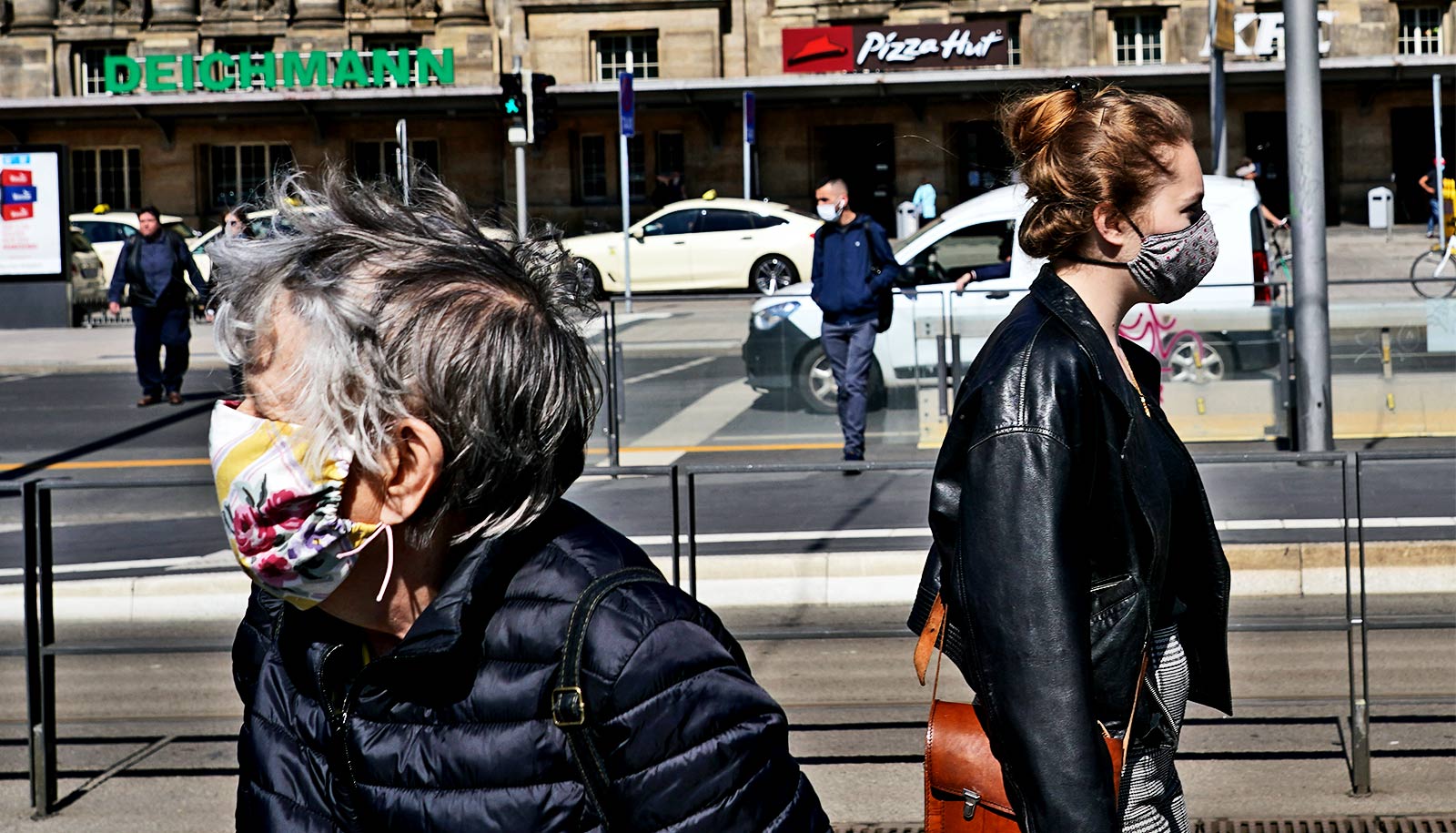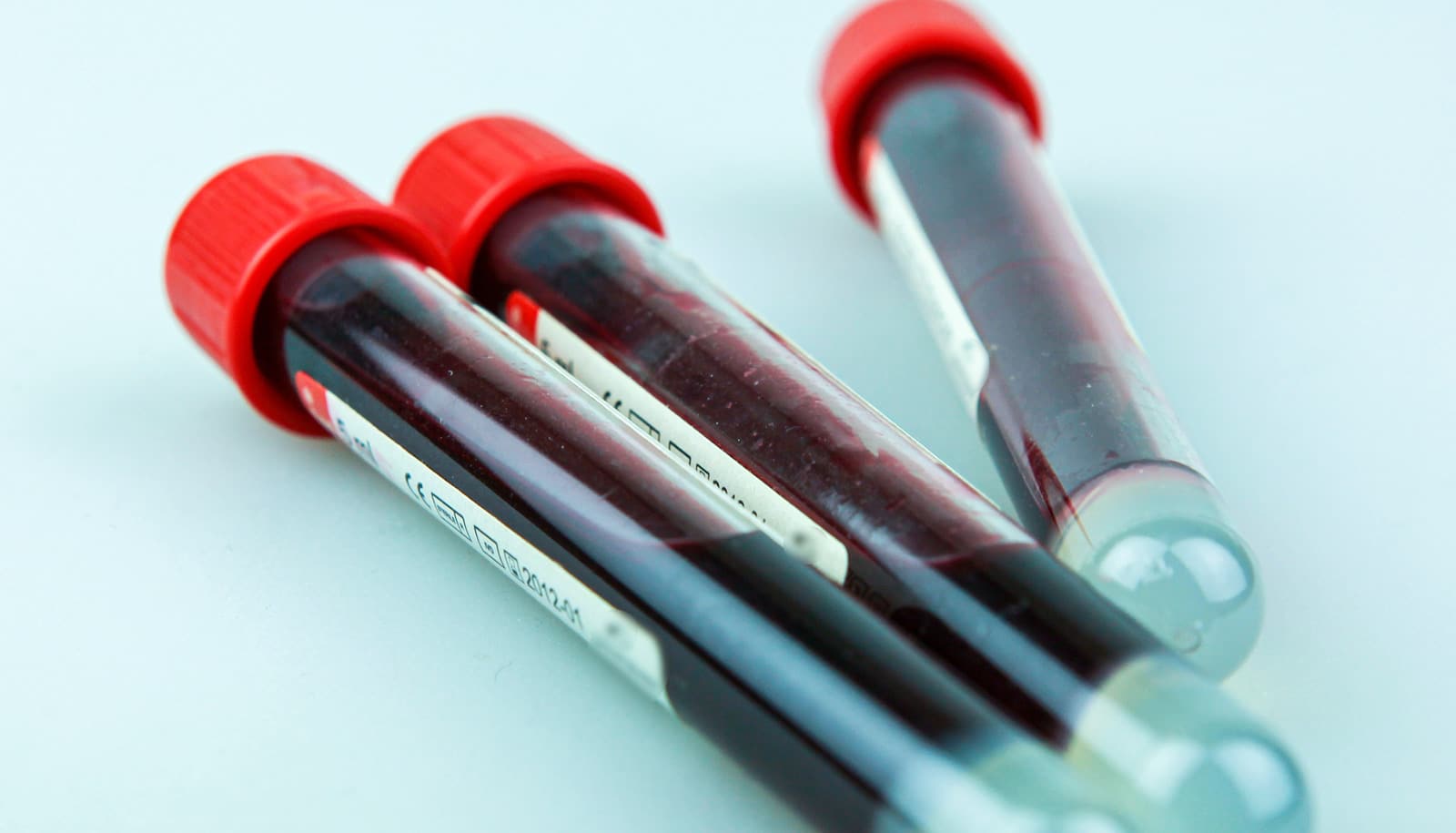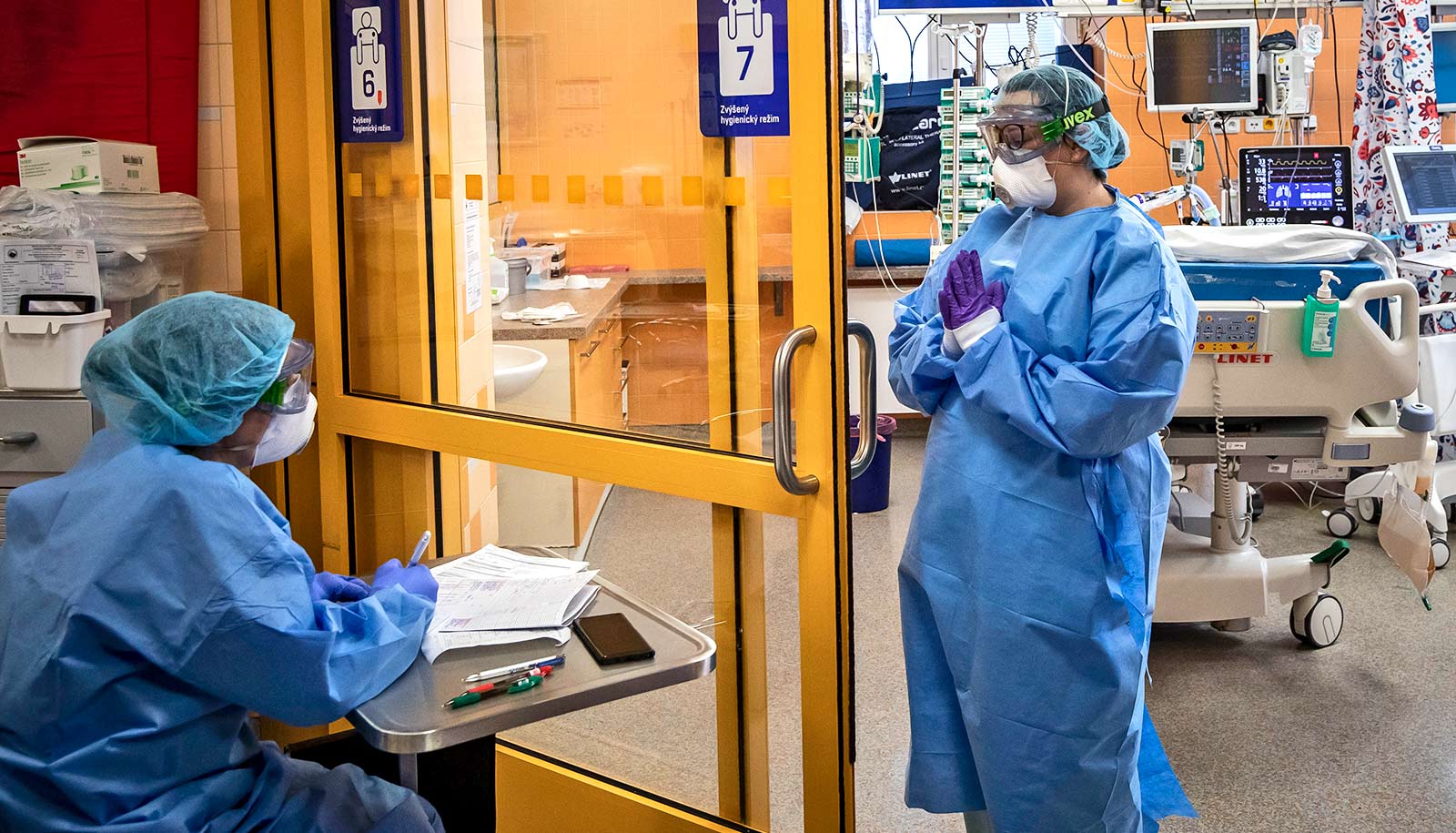
Two women, one elderly and one young, wear protective face masks as they wait for a street tram on the first day face masks became compulsory on public transport in the state of Saxony during the novel coronavirus crisis on April 20, 2020 in Leipzig, Germany. (Credit: Sean Gallup/Getty Images )
Why do older people have more COVID-19 symptoms?
For smokers and older adults, COVID-19 can lead to more extreme symptoms and serious respiratory illness. New research is digging into why.
Why do some people—such as smokers and older adults—have extreme respiratory and cardiovascular distress from COVID-19 while others have no symptoms at all?
Researchers are working to answer this question by studying a surface molecule found on the thin layer of epithelial tissue that lines the lungs, heart, and most other organs in the body.
The molecule, called angiotensin-converting enzyme 2 (ACE-2), is primarily known for lowering blood pressure; however, it’s also a known entry point into cells for SARS-coronaviruses. The team is investigating whether this molecule and the partners it interacts with inside the cell are expressed differently in populations who often have extreme COVID-19 symptoms.
“The hypothesis we are working on is that, in smokers , the receptor is expressed at higher levels compared to non-smokers, which would give the virus additional ‘ports of entry’ and therefore facilitate its spread from one cell to another,” says virologist Maria Blasi, assistant professor of medicine and a member of the Duke University Human Vaccine Institute.
To study the receptor, the team is using a model that pulmonologist Scott Palmer, a professor of medicine, immunology, and population health sciences, has used in the past to assess the impact of smoking and vaping on airway cells. In the lab, Palmer grows human airway epithelial cells and exposes them to tobacco smoke and flavoring agents commonly used in e-cigarettes.
For the COVID-19 project, he hands off the cells to Blasi, who infects them with SARS-CoV-2 and observes what happens in cells that have been infected with the virus and treated with smoking flavoring agents versus those that have only been infected with the virus.
“The airway epithelium is the first line of host defense, and exposures like smoking or vaping may render that epithelium injured and more vulnerable to SARS-CoV-2, both in terms of susceptibility and severity of infection once it occurs,” says Palmer.
“Understanding how smoke or vaping exposure renders the epithelium vulnerable will give us insight not only in how to better treat patients with smoking or vaping exposures that then are exposed to SARS-CoV-2, but also give a broader understanding of how COVID-19 attacks and overcomes natural host defenses to cause disease,” says Palmer.
The team is also examining both young and old nonhuman primate lung epithelial cells isolated by collaborators at the California National Primate Research Center by infecting them with the virus to define the host factors that mediate protection from severe SARS-CoV-2 disease in children. So far, children who have tested positive for COVID-19 are typically either asymptomatic or have few symptoms .
“This work will bring together investigations of human lung epithelial cell biology, molecular virology, and the highly-relevant viral pathogenesis models in nonhuman primates, exploiting the laboratory expertise of scientists specializing in these areas who before COVID-19 had not yet collaborated,” says Sallie Permar, professor of pediatrics, immunology, pathology, and molecular genetics and microbiology, and a member of the Duke Human Vaccine Institute.
Looking forward, the researchers hope that a better understanding of the molecular mechanisms responsible for more severe disease in these high-risk populations will lead to the discovery of novel therapeutic targets for coronaviruses disease.
Source: Duke University
The post Why do older people have more COVID-19 symptoms? appeared first on Futurity .
Share this article:
This article uses material from the Futurity article, and is licenced under a CC BY-SA 4.0 International License. Images, videos and audio are available under their respective licenses.
Related Articles:
Is cadmium a factor in flu, pneumonia, COVID death rates?
Dec. 17, 2020 • futurityTool predicts who’ll get seriously sick from COVID-19
March 30, 2020 • futurityLinks/images:
- https://www.futurity.org/smoking-cessation-addiction-1649712/
- https://www.futurity.org/self-reported-symptoms-covid-19-forecasting-2342802/
- https://www.futurity.org/covid-19-and-older-adults-2320302-2/
- https://medschool.duke.edu/about-us/news-and-communications/med-school-blog/why-do-some-people-infected-coronavirus-fare-worse-others-school-medicine-researchers-search-answers
- https://www.futurity.org/covid-19-symptoms-severity-smokers-older-adults-2344972/
- https://www.futurity.org


